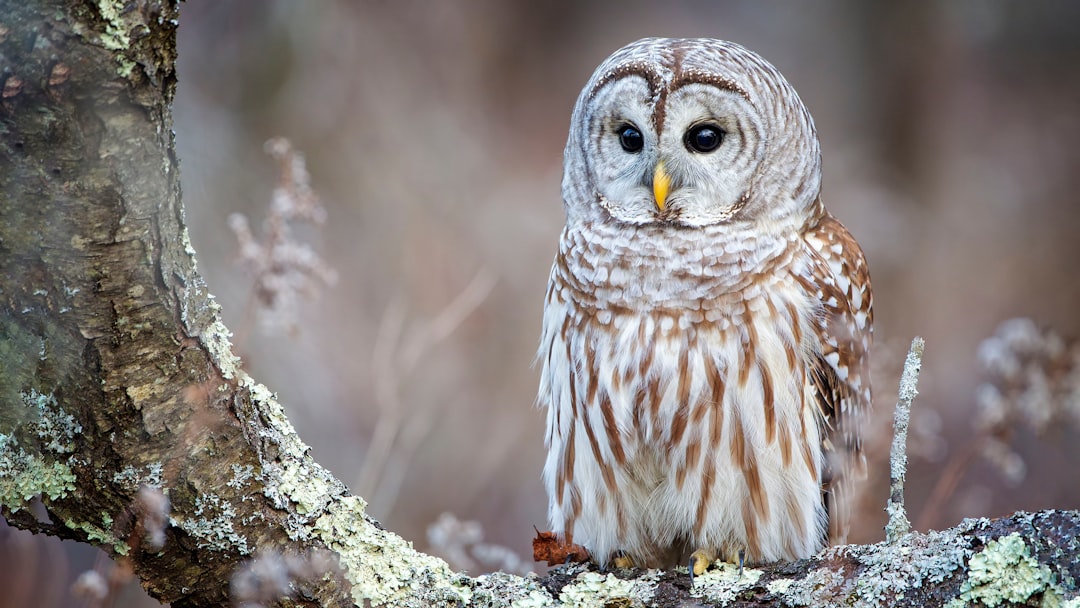A Feathered Fiasco Unfolds (Image Credits: Unsplash)
Deep in the misty canopies of old-growth forests, whispers of urgency echo as unlikely voices clash over the survival of feathered residents.
A Feathered Fiasco Unfolds
Picture this: a plan to shoot nearly half a million birds to protect another species. That’s the wild reality facing the Pacific Northwest right now. The U.S. Fish and Wildlife Service wants to target barred owls, seen as invaders pushing the endangered northern spotted owl toward extinction. It’s a bold move, but it’s stirring up a storm of opposition.
These barred owls have been expanding their territory, outcompeting the spotted ones for food and nesting spots. Without action, experts warn, the spotted owl could vanish entirely from parts of its historic range. Yet, the idea of mass culling feels like a step too far for many.
Why the Spotted Owl Needs Saving
The northern spotted owl became a symbol of environmental battles back in the 1990s. Logging restrictions followed to protect its habitat, sparking decades of tension. Today, their numbers have plummeted to critically low levels, with habitat loss and competition as top threats.
Conservationists have poured resources into recovery plans, from monitoring nests to preserving vast swaths of forest. Still, the spotted owl clings to survival in fragmented woodlands, a reminder of how interconnected ecosystems can be.
The Rise of the Barred Owl Menace
Barred owls aren’t native to the West Coast. They migrated from the east, thriving in the same dense forests as spotted owls. Larger and more aggressive, they dominate shared territories, leading to direct confrontations.
Studies show barred owls hybridizing with spotted owls, diluting the gene pool. Their adaptability has allowed them to spread rapidly, turning what was once a balanced habitat into a battleground.
The Cull Plan Under Fire
Officials propose killing up to 450,000 barred owls over 30 years through targeted shooting. The goal? Restore balance and give spotted owls breathing room. But critics call it cruel and ineffective, arguing it ignores root causes like habitat degradation.
GOP lawmakers and animal rights groups have jumped in, pushing resolutions to halt the program. They see it as government overreach, questioning why one species must die for another.
Strange Bedfellows Emerge
Here’s where it gets really interesting. The timber industry, often at odds with environmentalists, is siding with green groups on this one. Loggers worry that blocking the cull could tighten forest management rules even further, hurting their operations.
Environmental advocates, meanwhile, support the plan to safeguard spotted owls without broader logging bans. This rare unity highlights how complex wildlife issues can bridge divides.
For years, the timber sector fought owl protections that slashed jobs. Now, they argue the cull is essential to avoid more restrictions, creating a pragmatic alliance with former foes.
Timber Voices Break the Silence
Industry leaders point out the economic ripple effects. Without the cull, they fear renewed calls for no-logging zones, echoing the 1990s shutdowns that devastated communities.
One association rep noted how overregulation has already led to overgrown forests prone to wildfires. They see the plan as a targeted fix, not a free pass for exploitation.
Environmentalists’ Tough Stance
Groups like the Audubon Society back the cull reluctantly. They emphasize science over sentiment, citing data that shows barred owls as the primary threat now.
Still, many push for alternatives, like better habitat restoration. The debate forces a hard look at invasive species management in a changing climate.
Broader Implications for Wildlife Policy
This controversy spotlights flaws in conservation strategies. Killing one species to save another raises ethical questions about human intervention in nature.
Supporters argue it’s necessary triage. Opponents demand non-lethal options, from deterrents to relocation, though experts say those won’t scale.
Here are key elements of the proposed strategy:
- Annual removal targets in high-conflict areas
- Trained shooters using non-lead ammo
- Monitoring to assess spotted owl recovery
- Adaptive management if results fall short
- Focus on Washington, Oregon, and California forests
Key Takeaways
- The cull aims to protect an icon of biodiversity but divides animal lovers.
- Unusual partnerships show how policy can unite rivals.
- Success hinges on balancing ecology, ethics, and economics.
In the end, this owl showdown reminds us that nature doesn’t fit neat boxes. Saving one species often means tough choices for others, and the fallout could reshape forest policies for generations. What side are you on in this feathered feud? Share your thoughts below.







